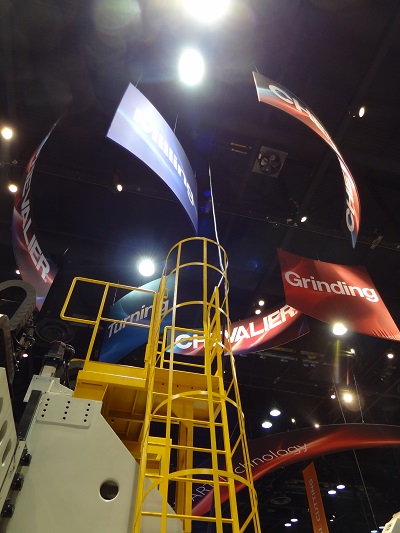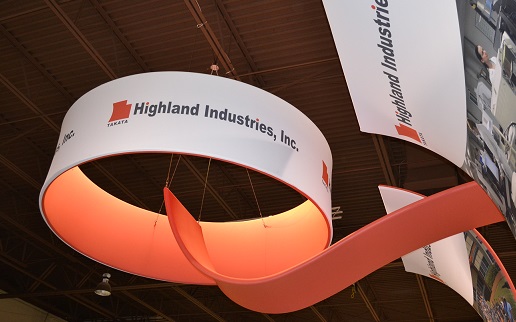How do you make sure your exhibit stands out from the crowd on the show floor?
That’s easy; take advantage of overhead real estate by adding hanging signs to your exhibit.
There are some details you must be aware in order to avoid some hidden costs associated with hanging signs.

- Rigging is a common term used in the trade show industry that refers to the overhead suspension of objects, usually hanging signs or walls.
- A rigger is a skilled worker who handles signage or any other booth elements that requires ceiling support cables, during install and dismantles.
When you are planning the budget for your booth, know that there can be some hidden costs associated with hanging signs.
Here are some of the most common fees you will see when arranging rigging on the show floor and ways to avoid hidden costs, or at least prepare for them.
- All signage that weighs 500 pounds or more has to be reviewed, signed and stamped by a licensed structural engineer to certify structural integrity and safety. Some venues require the engineer to be licensed in the city of the show. Taking care of this beforehand will save you time and money.
- In union states, the riggers must assemble the signage before hanging it. This will cost you in labor hours and additional crew members. In non-union states your labor team can assemble the signage, which will save you money.
- Rigging pricing is based on a one hour minimum for installation. The price includes one lift and one crew. The show supervisor can add additional labor or equipment if they feel it’s necessary for safety. There is really no way to avoid this charge; you simply have to follow the rules. After all, these guidelines are in place to make sure no one gets hurt.
- Take advantage of early bird discounts. For example, at one show it cost $557.55 for rigging at the early bird price, but arranging it on show floor will cost you $724.80. That’s saving you over $150 per hour!
- You will be charged for additional rigging equipment that is needed to hang your signage. In union states, you must use the decorator’s equipment, i.e. the cables, hooks and harnesses.
- Typically, you must ship your hanging signs separately to advanced warehouse. The show decorators hang signs first. Having an experienced supervisor on-site during the rigging process is a good idea, but not necessary.
- Schedule rigging on straight time if possible.
The best way to make sure you don’t incur additional charges is to know your signage. Have your exhibit design partner show or explain all the assembly instructions, the weight, dimensions and any other important information, so you’re not caught off guard with additional charges. It’s always a good idea to have an experienced supervisor for install and dismantle. Apple Rock supervisors know the processes inside and out, are familiar with your booth and the show decorators, and will make sure that you don’t incur hidden fees for rigging.





